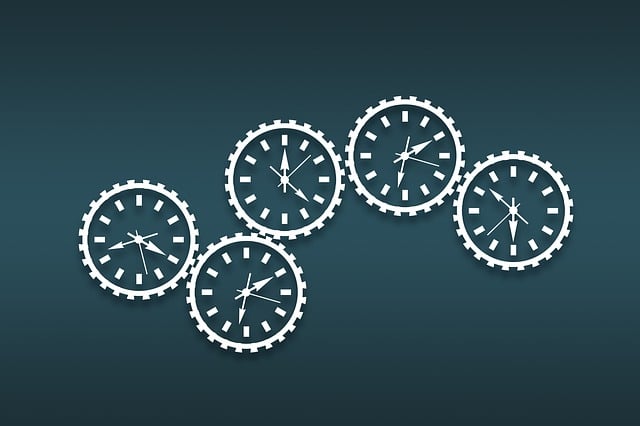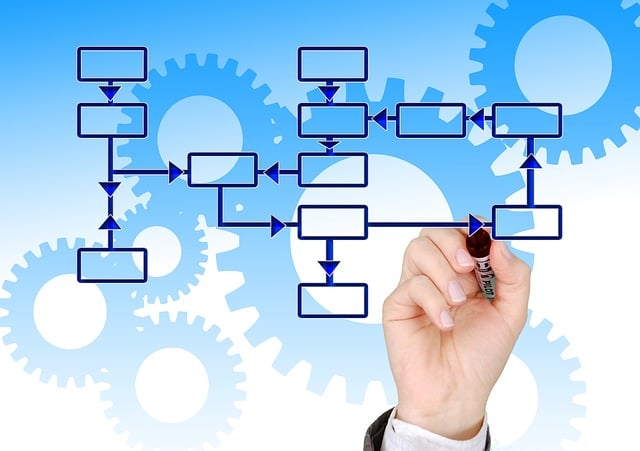Mastering Lean Management principles is crucial for continuous improvement. 5S training (Sorting, Setting, Shining, Standardizing, Sustaining) optimizes workplace organization, reduces waste, and boosts efficiency through process standardization. Regular audits and training foster a culture of quality control, empowering employees to drive ongoing enhancements and sustain high performance. Measuring success using KPIs like task time, inventory rates, and customer satisfaction ensures data-driven continuous improvement based on industry benchmarks.
In today’s competitive business landscape, continuous improvement is not just an advantage but a necessity. This comprehensive guide explores effective strategies for streamlining operations and unlocking efficiency through lean management principles and the power of 5S training. We’ll delve into core concepts, from understanding workplace organization to implementing process standardization, cultivating a culture of quality, and measuring success with key metrics. By embracing these practices, organizations can achieve remarkable results and stay ahead in the market.
- Understanding the Core Principles of Lean Management
- Implementing 5S Training for Optimal Workplace Organization
- Unlocking Efficiency: Standardizing Processes for Continuous Improvement
- Identifying Waste: Key Steps in 5S Continuous Improvement
- Cultivating a Culture of Quality through Regular Audits
- Measuring Success: Metrics and Benchmarking for Process Standardization
Understanding the Core Principles of Lean Management

Understanding the core principles of Lean Management is essential for any organization looking to implement a robust continuous improvement process. At its heart, Lean management emphasizes the elimination of waste and the optimization of processes to enhance efficiency and customer value. The 5S training method, a cornerstone of Lean, involves sorting, setting in order, shining (cleaning), standardizing, and sustaining. This systematic approach to workplace organization not only improves productivity but also fosters a culture of continuous improvement where every employee is encouraged to identify and eliminate non-value-added activities.
By implementing process standardization, organizations can achieve consistency in their operations, reducing errors and improving quality. This involves creating detailed procedures for routine tasks, ensuring that everyone follows the same steps. Such standardization allows for easier training, faster onboarding of new employees, and more effective problem-solving as issues can be traced to specific points in the process. Ultimately, embracing Lean management principles empowers teams to take ownership of their work, driving continuous enhancements and fostering a high-performance organizational culture.
Implementing 5S Training for Optimal Workplace Organization

Implementing 5S Training for Optimal Workplace Organization
In today’s competitive business landscape, achieving peak efficiency through robust workplace organization is a key driver of success. 5S training, rooted in lean management principles, offers a powerful framework to transform work environments. The 5S methodology—Sort, Set in Order, Shine (Clean), Standardize, and Sustain—serves as a systematic approach to process standardization, eliminating waste, and fostering a culture of continuous improvement. By teaching employees these foundational practices, organizations can create more streamlined workflows, enhance productivity, and boost overall workplace satisfaction.
This structured training involves sorting through tools, materials, and tasks to eliminate clutter and redundant processes, setting everything in a logical order. Regular cleaning and maintenance, or “shining,” ensure an aesthetically pleasing environment that promotes focus and efficiency. Standardizing procedures guarantees consistency, enabling employees to work more effectively. Lastly, the “sustain” phase emphasizes the ongoing commitment to these principles through regular audits and continuous refinement, ensuring long-lasting organizational excellence.
Unlocking Efficiency: Standardizing Processes for Continuous Improvement

Unlocking Efficiency: Standardizing Processes for Continuous Improvement
In today’s competitive business landscape, continuous improvement is not just a strategy—it’s a necessity. Standardizing processes through methodologies like 5S training and lean management offers a powerful path to enhancing workplace organization and overall efficiency. By implementing these practices, organizations can identify and eliminate waste, streamline workflows, and create a culture of ongoing optimization.
5S continuous improvement focuses on sorting, setting in order, shining (cleaning), standardizing, and sustaining. This systematic approach ensures that every step of a process is clearly defined, optimized, and consistently executed. As a result, teams can work smarter, not harder, leading to increased productivity, reduced errors, and improved overall quality.
Identifying Waste: Key Steps in 5S Continuous Improvement

Identifying waste is a crucial step in any continuous improvement process, and 5S training offers an effective framework to achieve this. The 5S methodology, rooted in lean management principles, focuses on sorting, setting in order, shining (cleaning), standardizing, and sustaining. By systematically applying these steps, organizations can uncover and eliminate inefficient practices and redundant tasks, enhancing workplace organization and overall productivity.
In the context of 5S continuous improvement, “sorting” involves categorizing items and processes, discarding unnecessary ones. “Setting in order” ensures that tools and materials are arranged for easy access and efficiency. “Shining” emphasizes maintaining a clean and safe environment, facilitating faster and safer work. “Standardization” establishes clear procedures and documentation, enabling process standardization and consistency. Finally, “sustainability” focuses on instilling these practices as part of the organization’s culture, ensuring continuous improvement over time.
Cultivating a Culture of Quality through Regular Audits

Cultivating a culture of quality is essential for any business aiming for continuous improvement. Regular audits play a pivotal role in this process by systematically evaluating workplace organization and identifying areas for enhancement. Implement 5S training, a core principle of lean management, to streamline processes and promote standardization. This involves sorting, setting in order, shining (cleaning), standardizing, and sustaining, creating an environment conducive to efficient operations.
Through these audits, organizations can uncover inefficiencies, waste, and non-value added activities, fostering a mindset that constantly seeks improvement. By embracing the 5S methodology, teams learn to maintain a neat and organized workspace, ensuring processes are clearly defined and easily understood. This not only enhances productivity but also empowers employees to take ownership of quality control, making continuous improvement an integral part of their daily practices.
Measuring Success: Metrics and Benchmarking for Process Standardization

Measuring success is a vital aspect of any continuous improvement process, especially when adopting methodologies like 5S training and lean management. By establishing clear metrics and benchmarks, organizations can ensure their efforts in workplace organization and process standardization are effective and sustainable. These metrics should go beyond simple visual inspection scores, delving into key performance indicators (KPIs) that reflect improved efficiency, reduced waste, and enhanced productivity.
For instance, a 5S continuous improvement initiative might track the time taken to complete tasks, inventory turnover rates, or customer satisfaction scores. Benchmarking these metrics against industry standards allows for a realistic assessment of progress. This data-driven approach enables managers to identify areas that require further optimization and make informed decisions, fostering a culture of continuous learning and enhancement within the organization.
By integrating Lean Management principles, particularly through effective 5S training, organizations can transform their workplace organization and ignite a culture of continuous improvement. Standardizing processes is key to unlocking efficiency and identifying waste, ensuring every step aligns with overall goals. Regular audits and meticulous benchmarking solidify quality assurance while celebrating measurable progress. Embracing this disciplined approach, driven by 5S continuous improvement methods, fosters a dynamic environment where process standardization becomes the cornerstone of operational excellence.
